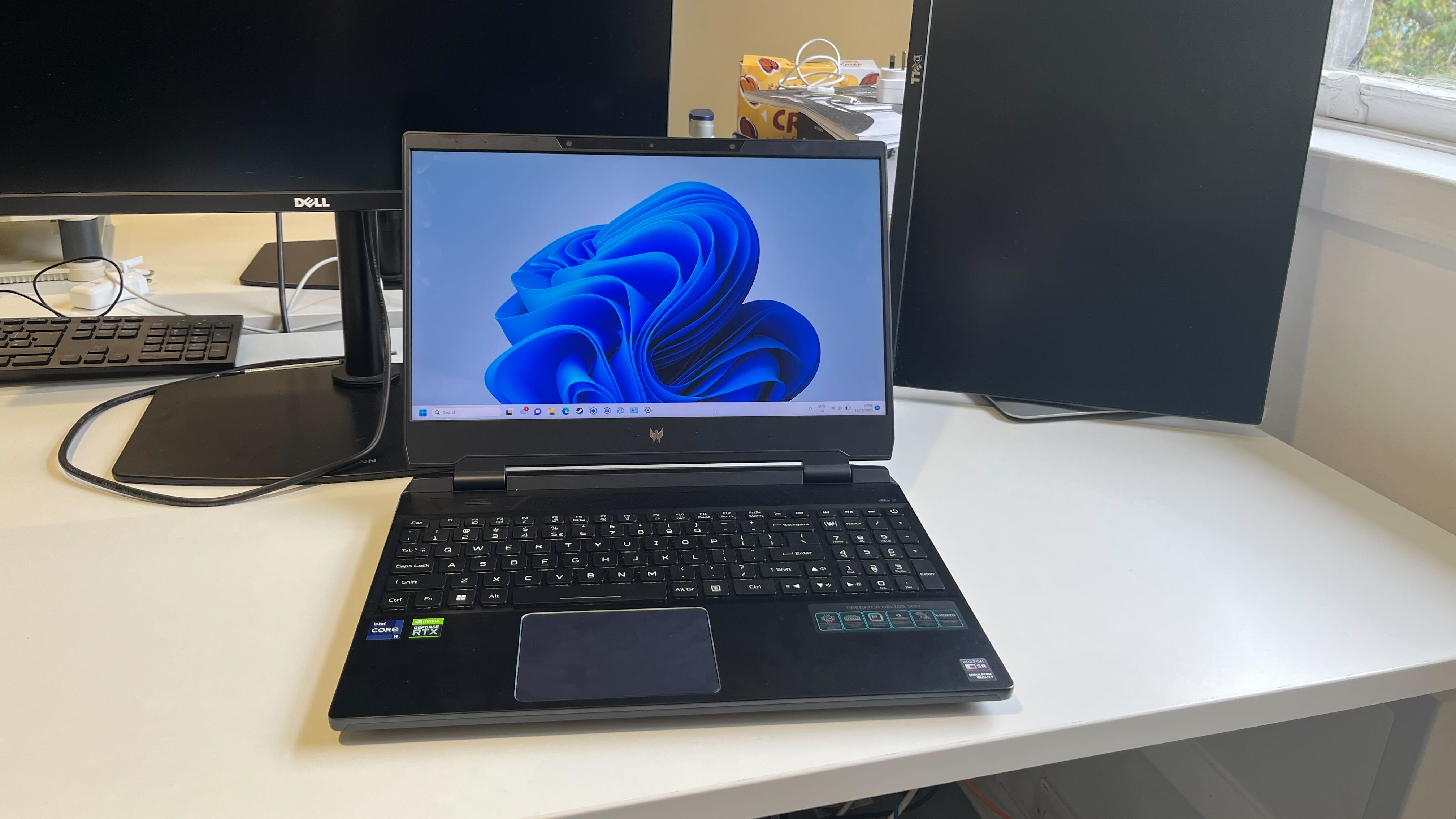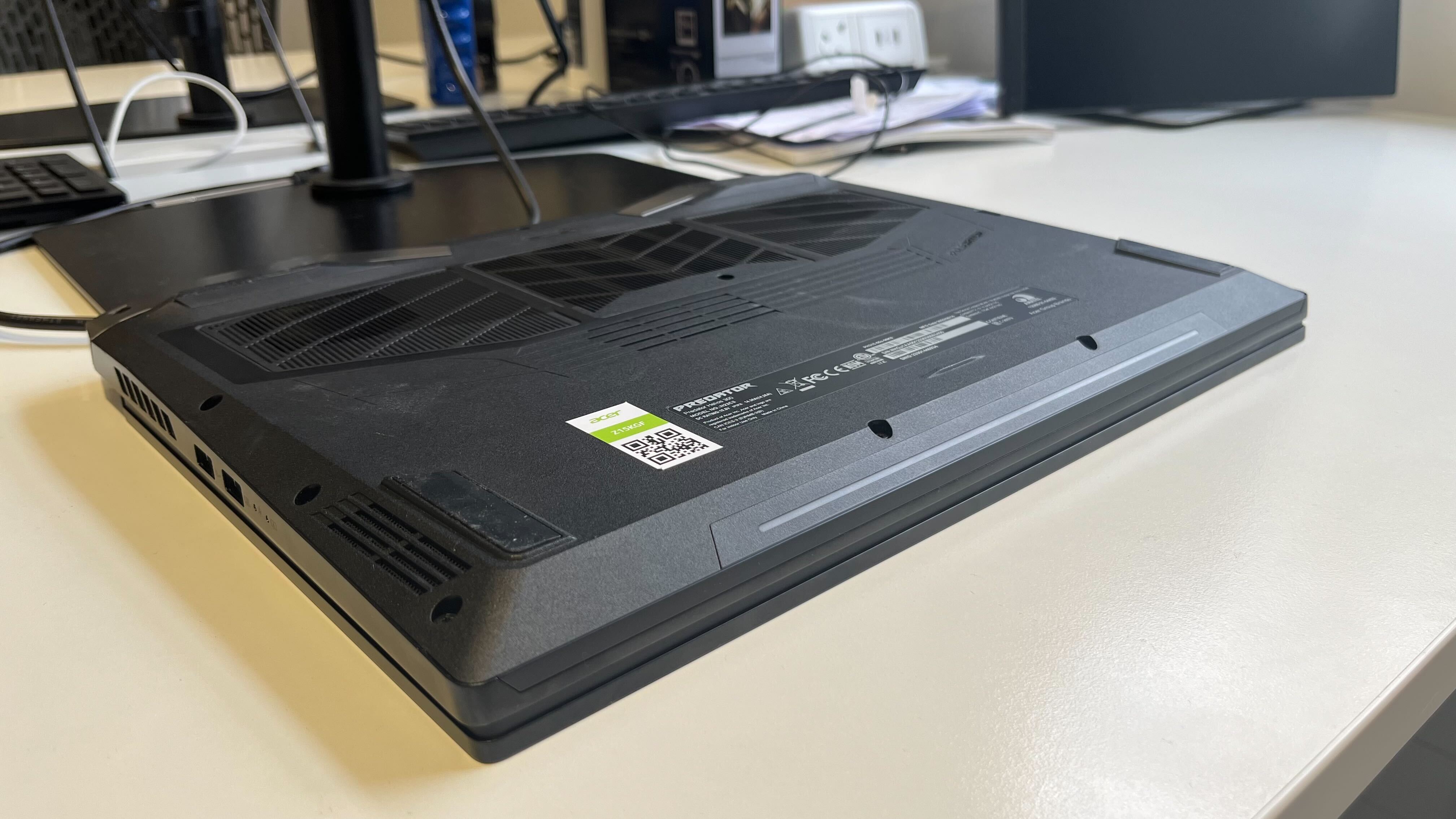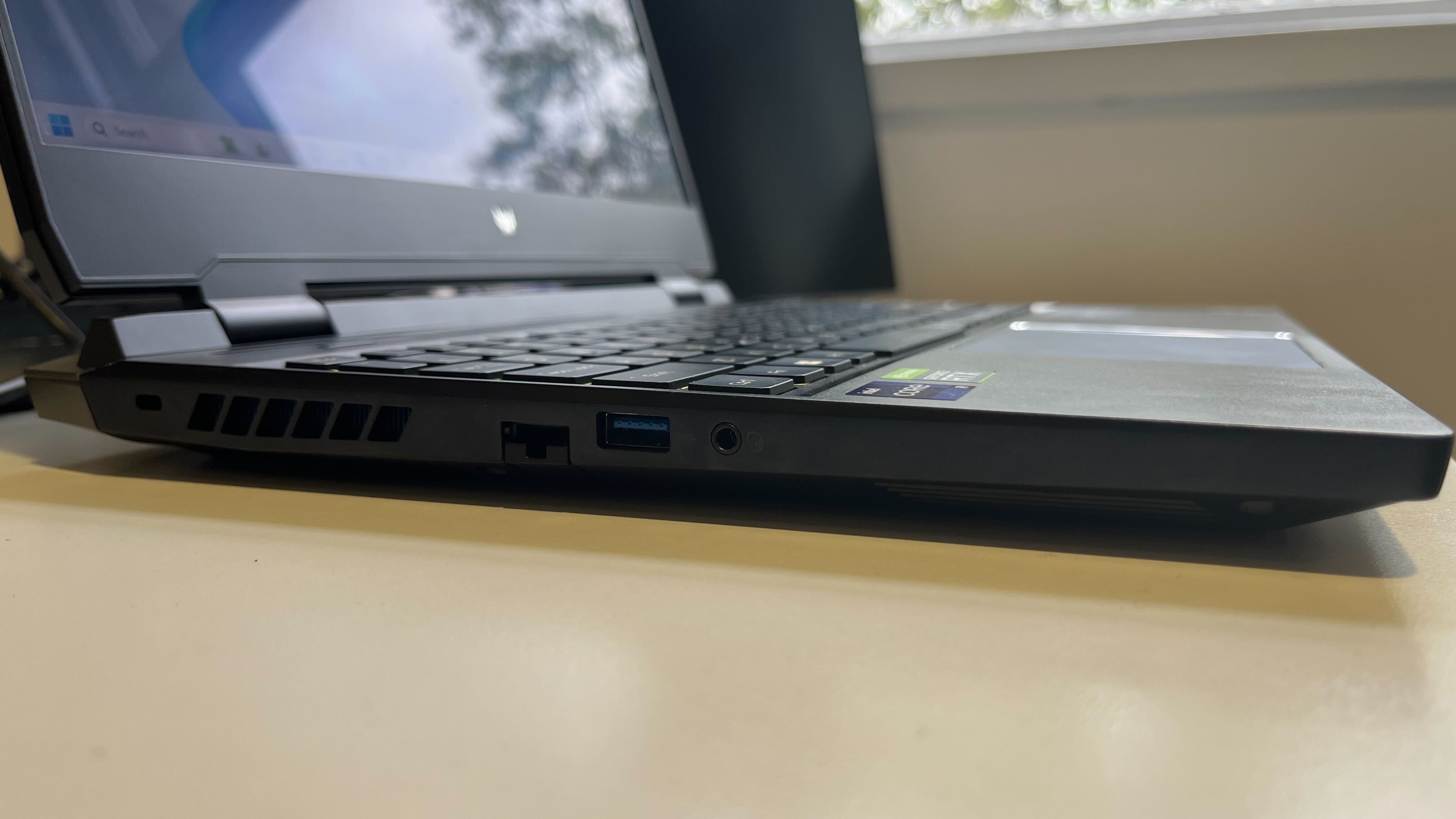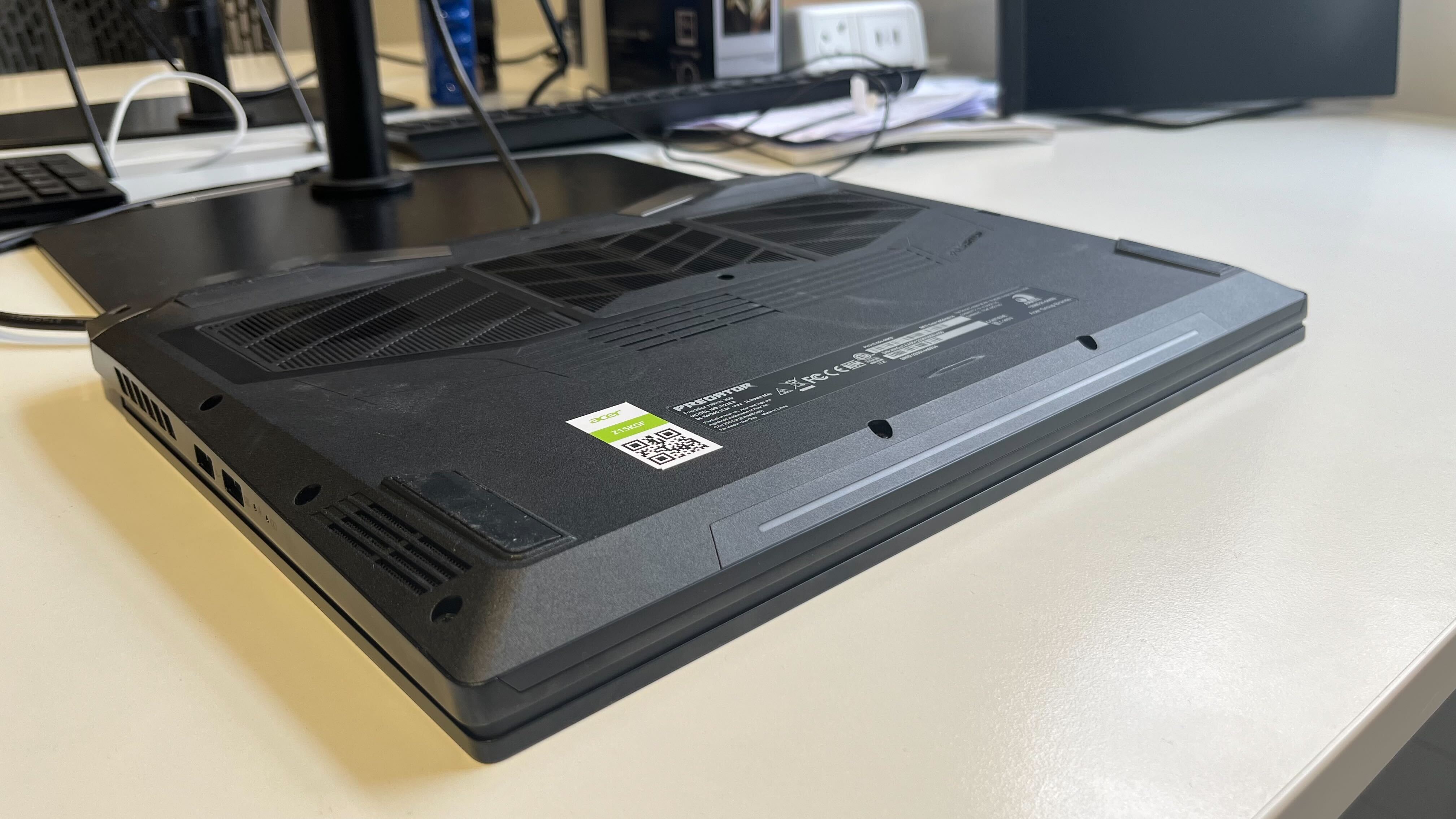
Acer Predator Helios 300 SpatialLabs Edition: Two-minute review
This SpatialLabs variant of the Acer Predator Helios 300 is by far one of the strangest recent additions to Acer’s popular Predator line of high-end gaming hardware.
Taking a good all-round gaming laptop and slapping on an expensive glasses-free 3D SpatialLabs display is certainly one way to make a machine that stands out from the crowd, but it's hard to not wonder whether such a device was really necessary.
This is one of the very first glasses-free 3D gaming laptops on the market, a fact that sadly seems to be the root cause of many of its shortcomings. As is the case with being an early adopter of almost any new tech, you’re paying a prohibitively high price to get in on the action first while it's in its most unpolished state.

As you’ll see below, the glasses-free 3D is impressive when it works, but there are a raft of obvious teething issues to contend with. This includes a strange matrix of visible dots that spoil an otherwise excellent display in 2D mode, utterly atrocious battery life, and poor gaming performance whenever the 3D is turned on.
These problems will surely be ironed out with future iterations but, for the moment, it's disappointing to see consumers being sold a product that feels a little too much like a prototype.
In spite of this, sharing a lot of characteristics with the design of the regular Acer Predator Helios 300 means that there is still a solid gaming laptop beneath it all. The materials are sturdy and the specs, while unimpressive for the price, are perfectly adequate for playing most modern games in 2D.
Will these strong foundations save the Acer Predator Helios 300 SpatialLabs Edition from becoming nothing more than an amusing novelty? If not, what options should you consider instead? Let’s take a look.
Acer Predator Helios 300 SpatialLabs Edition: Price & Availability
- How much does it cost? $3,499.99 / £3,299.00 / around AU$4,300
- When is it available? Available now
- Where can you get it? Available in the US, UK, and Australia
The Acer Predator Helios 300 SpatialLabs Edition is available for $3,499.99 in the US, £3,299.00 in the UK, and roughly AU$4,300 in Australia. These prices, however, seem to vary dramatically between retailers - so it's well worth taking the time to shop around to make sure that you are getting the very best deal.
There appears to be only one configuration on the market which, like our review unit, sports an RTX 3080 and a 12th-gen Intel i9 processor. These specs are enough to comfortably tackle most recent games at 1080p, but do seem rather outdated for the price
Obviously, it's reasonable to expect the unique SpatialLabs display to comprise a fair chunk of the cost here, but these specs sting when you can easily find laptops with the slightly more powerful RTX 4070 and comparable 13th-gen Intel processors being sold for significantly less.
- Price score: 2 / 5
Acer Predator Helios 300 SpatialLabs Edition: Specs
As I mentioned above, the Acer Predator Helios 300 SpatialLabs Edition we tested came packing an RTX 3080 and 12th-gen Intel i9 processor. Here’s the lowdown on everything else under the hood:
Acer Predator Helios 300 SpatialLabs Edition: Design

- Great keyboard
- Sturdy construction
- Impressive glasses-free 3D effect
My first impressions of the Acer Predator Helios 300 SpatialLabs Edition were positive, not too unexpected given that it shares a lot in common with the excellent design of the preexisting Acer Predator Helios 300.
Taking it out of the box, I was immediately struck by just how sturdy everything felt. The laptop’s body is constructed with a pleasant matte plastic and the lid has been fitted with a robust metal cover. This cover not only looks suitably premium but should help prevent any unfortunate scratches when the laptop is inevitably chucked in a bag without a case - at least, if you’re anything like me.
The keyboard is a highlight too, with good spacing and bright RGB lighting that can be fully customized with the included PredatorSense software. There is no noticeable flex when typing and I found the smooth travel of each key to be satisfying and efficient. The trackpad, on the other hand, is not quite as strong thanks to its slightly mushy clicks.

This is by no means the thinnest laptop on the market, but this bulk does allow for a fantastic selection of ports. You have easy access to three USB 3.2 Type-A ports for any gaming peripherals and one additional USB Type-C Thunderbolt 4 port on the rear - perfect for hooking the laptop up to an external monitor or dock.
In terms of video output, there’s also an HDMI 2.1 port and a Mini DisplayPort 1.4. The Kensington Lock is also a welcome inclusion at this price, adding some additional physical security should you need it.
The built-in speakers are one area for definite improvement, though, as they lack bass. This can detract from the enjoyment of some games, especially first-person shooters where I found that more powerful weapons like DOOM’s BFG 9000 just didn’t feel quite the same without that added oomph.

Where things really start to take a turn, however, is with the display. This is a 15.6” IPS 4K UHD screen which, thanks to its 3D features, lacks some expected niceties like a high refresh rate, G-Sync, or HDR.
While the picture is perfectly crisp and its colors very vivid, the entire screen is covered in an array of tiny dots. This is, presumably, something that is necessary to accomplish the 3D effect but it makes the display unpleasant to use for the vast majority of 2D applications. If you spend a lot of time word processing or browsing the internet, you’re probably going to want to plug in an external monitor as soon as possible.
Thankfully these dots become invisible when you enable the 3D mode, your first introduction to which is likely to be the pre-installed 3D model viewer. Although the resolution takes a noticeable hit when you start the program, the results were striking enough to elicit an audible “wow” from me, a handful of colleagues, and several family members.
The full effect is most easily compared to watching a 3D movie at the cinema, with a real sense of depth but without the need for any awkward plastic glasses. Better yet, the full eye-tracking allows the 3D image to convincingly follow your gaze. It can feel a tad uncomfortable, though, straining your eyes over periods of extended use.
- Design score: 3 / 5
Acer Predator Helios 300 SpatialLabs Edition: Performance
- Excellent gaming performance… in 2D
- Handy Turbo button to boost frames
- Fans are loud but efficient
Here's how the Acer Predator Helios 300 SpatialLabs Edition performed in our suite of benchmark tests:
3DMark Night Raid: 32,311; Fire Strike: 17,546; Time Spy: 10,128
GeekBench 6: 2,422 (single-core); 11,191 (multi-core)
Total War: Warhammer III: 1080p Ultra: 96.5 fps 1080p Low: 227.6 fps
Dirt 5: 1080p Ultra: 50.5 fps 1080p Low: 126 fps
Cyberpunk: 1080p Ultra RT: 36.6 fps 1080p Low: 57.7
PCMark 10 Battery Life: 2hr 37m
TechRadar Movie Battery Life: 2hr 6m
The performance of the Acer Predator Helios 300 SpatialLabs Edition is best approached in two distinct halves: 2D performance and 3D performance. With the formidable power of the RTX 3080 and i9-12900H, it’s no surprise that the 2D performance is impressive.
Although our 3DMark benchmark results were on the lower end of the expected range, this was likely due to interference from the SpatialLabs software (necessary for the function of the 3D screen) which cannot be disabled easily and runs in the background at all times. Performance was excellent in the games themselves, however, with Cyberpunk 2077 running consistently above 30 fps on its Ultra Raytracing preset at 1080p.
Likewise, Dirt 5 on its Ultra preset could achieve an admirable 50 fps, while the less intensive strategy title Total War: Warhammer III was comfortably in the 90s. With specs this powerful, you’re unlikely to run into any major issues playing most recent games at 1080p and, even when you crank things up to 4K, careful use of Nvidia’s DLSS allows you to achieve very smooth performance.

While the fans do become loud very quickly, the thermals remain impressively consistent too. A quick tap of the turbo button (located above the keyboard) can also substantially boost your overall performance by overclocking the fans, CPU, and GPU.
In Cyberpunk 2077, I was able to achieve an average 53.2 fps running the same Ultra Raytracing 1080p benchmark with turbo enabled but, as it can only be used while plugged in and raises the already loud fans to such a level that headphones become a necessity, it’s not something that you’re going to want to have switched on all of the time.

Unfortunately, the performance absolutely tanks once you turn the 3D on. Limited software compatibility is an obvious weakness too and there are just under 100 titles that support 3D at the time of writing. The vast majority of these are older games and, jumping into a fresh playthrough of Wolfenstein: The Old Blood, it quickly becomes clear why.
The use of stereoscopic 3D requires two separate 1920 x 2160 images to be rendered simultaneously - a very graphically intensive task. On its medium preset, Wolfenstein: The Old Blood hovered around 50 fps with frequent stutters. 3D performance in the small number of more recent supported games like Forza Horizon 5 is a similar story as that title specifically can barely scrape above 40 fps.
Low-intensity compatible indies like Abzû, a diving exploration game that was greatly enhanced by the charming impression of fish swimming out of the screen, fare much better - but such poor performance in the library’s bigger titles is a huge shame.
The uneven frame rates even seem to exacerbate the existing feelings of discomfort generated by the display. Your mileage may vary, but I was shocked to feel a nasty headache and motion sickness coming on after only 40 minutes of use in such games.
- Performance score: 2 / 5
Acer Predator Helios 300 SpatialLabs Edition: Battery life
- The battery life is just awful
- Really heavy power brick
As noted in our review of the 2022 Acer Predator Helios 300, this model already suffered from extremely poor battery life and the addition of a new 3D display only seems to have further exacerbated this issue.
The Acer Predator Helios 300 SpatialLabs Edition was unable to clear 3 hours in the 3DMark office battery benchmark - an incredibly poor result. Taking the laptop out and about, I frequently found myself completely running out of juice after just a couple of hours of light browsing. If you throw some 2D gaming into the mix, you’re going to find yourself looking for a power socket considerably sooner.

Believe it or not, this terrible battery life somehow becomes even worse when you’re doing anything with the 3D enabled. Be prepared to drag the laptop’s hefty power brick around with you at all times.
- Battery score: 1/5
Should you buy the Acer Predator Helios 300 SpatialLabs Edition?
Buy it if...
Don't buy it if...
Acer Predator Helios 300 SpatialLabs Edition: Also consider
This might have been one of the first glasses-free 3D gaming laptop on the market but Acer also offer a handful of machines with SpatialLabs displays geared towards content creation. If you’re solely interested in using the glasses-free 3D features for 3D modelling or video editing consider buying a specialist laptop like the Acer ConceptD 7 SpatialLabs Edition instead.
If you want to game, however, you’re probably better off without the (literal) headache caused by a 3D screen. Here are two strictly 2D alternatives that offer more bang for your buck…
How I tested the Acer Predator Helios 300 SpatialLabs Edition:
- Replaced my everyday system for two weeks
- Used for gaming and document editing
I used the Acer Predator Helios 300 SpatialLabs Edition as my main machine for just over two weeks. This included a mix of productivity tasks (including the writing of this review) and some gaming. Given the limited number of supported titles, I predominantly played older games that were compatible with the glasses-free 3D screen. This included a full playthrough of Wolfenstein: The Old Blood (broken up into half hour chunks to avoid discomfort) and the opening hours of Abzû.
I also experimented with a handful of more recent additions to the glasses-free 3D catalogue like Forza Horizon 5. In terms of 2D gaming, I played a game of Total War: Warhammer III and wandered around the open-world of Cyberpunk 2077 to soak in the sights of Night City after the latest update. To test the battery life, I lugged the Predator Helios 300 SpatialLabs Edition around with me for a few days and used it in various public settings. The patrons of my local library really didn’t appreciate the loud fans.
First reviewed November 2023







